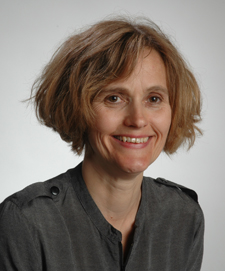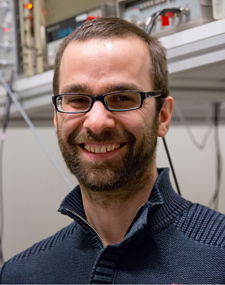Two NBI researchers receive Sapere Aude grants
Two NBI researchers, Charlotte Fløe Kristiansen, a professor in theoretical high energy physics and Albert Schliesser, an assistant professor in quantum mechanics have both received grants from the Danish Agency for Science, Technology and Innovation special Sapere Aude research career programme, receiving an Advanced Grant and Starting Grant respectively.

Charlotte Fløe Kristjansen, professor in the research group Theoretical High Energy Physics and Cosmology has received a grant of 11.5 million kroner from ‘Sapere Aude Top Researchers’.
Charlotte Fløe Kristjansen, professor in the research group Theoretical High Energy Physics and Cosmology at the Niels Bohr Institute has received a grant of 11.5 million kroner from ‘Sapere Aude Top Researchers’ for the research project: Integrability and Beyond, whose theme is the study of particles versus strings in high energy and condensed matter physics.
“My Sapere Aude project combines theoretical high energy physics and condensed matter physics and the grant gives me the opportunity to pursue a new research idea that has arisen in connection with the study of the relationship between particle and spring theory,” explains Charlotte Fløe Kristjansen.
She explains that string theory has typically been regarded as something that is only relevant at extremely high energies – much higher than the energies that can be generated by the enormous LHC accelerator at CERN. But in the past decade a shift has taken place in this perception and now particle and string theory are now considered to be equally accurate descriptions of the same phenomena under certain conditions.
She further explains that she and her research group will attempt to use the idea of an equivalence between particles and strings in systems that belong to condensed matter physics, which has not traditionally concerned itself with strings. The potential is that the string theory approach will make it possible to explore areas that cannot be explored with particle theory. In particular, they will try to use string theory to study graphene, which is one of the most talked about materials in recent years. The ultimate goal is to develop a concrete prediction about a physically measurable quantity based on string theory.
The Sapere Aude grant now makes it possible for Charlotte Fløe Kristjansen to assemble a strong group of young researchers and internationally renowned experts. The grant is for 5 years and will mean the hiring of 2-3 PhD students and 2 postdocs.

Albert Schliesser, assistant professor in the research group, Quantop at the Niels Bohr Institute has received a grant of 6.9 million kroner from the Sapere Aude research career programme for young research talents.
Albert Schliesser, assistant professor in the research group, Quantop at the Niels Bohr Institute has received a grant of 6.9 million kroner from the Sapere Aude research career programme for young research talents for the research project: Quantum Electrooptomechanics, which is the measurement of forces and fields using nanomechanical oscillators at the quantum limit.
Albert Schliesser is particularly interested in exploring the border between quantum physics and nanophysics. Quantum physics is very good at describing the physical world at the atomic level, while it is no good at describing the physics of everyday life, where mechanical devices are too big to exhibit quantum effects, like being in two places at the same time.
“But new methods to produce materials on a nanoscale (a nanometer is millionth of a millimeter) now make it possible to create advanced materials that are so small that the quantum effects are within reach,” explains Albert Schliesser, who has a PhD from the Max-Planck Institute in Munich, Germany and has been employed as a research assistant professor at the Niels Bohr Institute at the University of Copenhagen since January 2013.
He explains that his research project is to explore and exploit membranes that are so ultra-thin that the quantum mechanics work when you measure them. This would increase the precision of mechanical sensors far beyond what is possible today. Using these membranes as an interface between electrical and optical signals, they will also be able to measure radio and microwave signals in a whole new way – through light. This electrooptomechanical technique could allow for an unprecedented sensitivity to electrical signals and have potential applications in such diverse fields as medical imaging and radio astronomy along with other fields where electrical signals need to be measured very precisely.
The grant of 6.9 million kroner is for 4 years and will be used to build up his own research group and to hire 2 PhD students and acquire a lot of equipment for the experiments in the laboratory.
